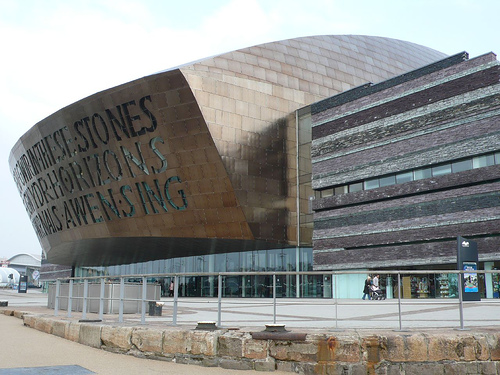Cardiff Branch Programme

Cardiff Branch Programme 2025-26
All enquiries to Professor Peter Edbury Edbury@cardiff.ac.uk or Dr Paul Webster WebsterP@cardiff.ac.uk
All talks start at 7pm via Zoom or Teams. A link to the talk is provided by email from Dr Webster.
All talks are free and Zoom/Teams allow us to have speakers from around the world – appropriately as this year our theme is “Globalising Welsh History” following Charlotte Williams and Neil Evans ed. "Globalising Welsh Studies" University of Wales Press 2024.
Wednesday 12 November 2025
Caribbean and West African lives in British ports: The 1921 census, black communities and economic migration in interwar Britain
Dr Joseph Radcliffe
The publication of the 1921 Census presents historians of early Black British history with an exciting and valuable new source that provides essential insight into the growth and development of black communities in Britain before the Second World War. The census opens a unique window into the social and economic lives of Caribbean and West African seamen and their families in the interwar period. As global conflict came to an end, economic depression took hold in British shipping. The tramp trade in Cardiff, a vital source of maritime employment for black seamen in Britain, suffered particularly badly. As a result, Caribbean and West African seamen moved between ports in South Wales and those in other parts of Britain in search of work. Well-established networks of black seamen’s boarding houses connected these men to these other ports, such as Liverpool. These networks facilitated movement, access to local labour markets and even supported those men who found themselves unemployed. This talk will explore how information revealed in the 1921 Census provides fresh insight into black lives in interwar Britain and how it proves key to understanding the social and economic challenges faced by Caribbean and West African seamen both transient and those that had settled and made the metropole their home.
This is the first of Cardiff HA`s 2025-26 season on "Globalising Welsh Studies". Joseph Radcliffe has recently completed his PhD at Birkbeck College, University of London. His research focuses primarily on the migration and settlement of black seamen from the Caribbean and West Africa.
Wednesday 10 December 2025
The East India Company and country houses in the Welsh Marches
Eleanor Stephenson
Eleanor Stephenson is a historian and curator working on the histories of art and science in the British Empire. She is currently a PhD Candidate at the University of Cambridge, researching the Royal Society’s connections to slavery in Jamaica from 1660 to 1714. Her research has been supported by the Paul Mellon Centre for Studies in British Art, the Association for Art History and The Lisa Jardine Grant Scheme. She has worked on exhibitions related to the British Empire at the Fitzwilliam Museum (Black Atlantic: Power, People, Resistance), the Dulwich Picture Gallery, and the Science Museum.
This talk is based on the chapter of the same name in Charlotte Williams and Neil Evans ed. "Globalising Welsh Studies" University of Wales Press 2024.
Wednesday 11 February 2026
Basque Oak and Portuguese Wine: A Medieval Merchant Ship Reveals Her Secrets
Dr. Toby Jones FSA, Curator/Curadur Newport Medieval Ship Project/Prosiect Llong Ganoloesol Casnewydd Newport Museum and Art Gallery/Newport City Council/Amgueddfa ac Oriel Gelf Casnewydd/Cyngor Dinas Casnewydd Unit 20, Estuary Road/Uned 20, Es
Dr Toby Jones, Curator of the Newport Medieval Ship Project, will reveal the latest findings of this mid-15th century merchant vessel. Discovered and raised in 2002-3, the well-preserved hull remains and numerous artefacts indicate that the ship was likely built in the Basque Country as a wine-trading vessel for Portuguese owners. Examination of the ship timbers has led to a greater understanding of Atlantic-Iberian ship design and ship building in the late medieval period. The recovery of such a unique find of unparalleled craftsmanship offers insights into technological innovation at the very beginning of the Age of Exploration while the hundreds of artefacts reveal the complexity of Anglo-Welsh /Iberian trading links and illuminate life on board the ship.
Wednesday 18 March 2026
William Blathwayt: Dyrham Park, its Collections and Early English Empire
Dr Bertie Mandelblatt
Through his association with the Plantations Office, the Board of Trade and the Privy Council over three decades in the late seventeenth and early eighteenth centuries, William Blathwayt was intimately associated with the expanding world of English colonies, both westward across the Atlantic Ocean and eastward to the Indian subcontinent and beyond. The collections of Blathwayt’s country house at Dyrham Park provide a perspective on the globalizing world he was instrumental in creating, reflecting the economic and commercial ties the Bristol region had with the expanding Atlantic economy in exactly the same period. One exemplary item historically drawn from these collections is the Blathwayt Atlas, which has been in the collections of the John Carter Brown Library in Providence, Rhode Island (USA) for over a century. In this talk, Dr Mandelblatt will discuss William Blathwayt as an imperial agent, as a collector and indeed as a commissioner of works that drew from and revealed the global networks of empire that Blathwayt and his social and political circles sought to strengthen and intensify.
George S. Parker II ’51 Curator of Maps and Prints, John Carter Brown Library Brown University Providence Rhode Island USA
Dr Mandelblatt is curator of maps and prints at the John Carter Brown Library, developing the map and print collections; curating exhibitions and developing programmes.

